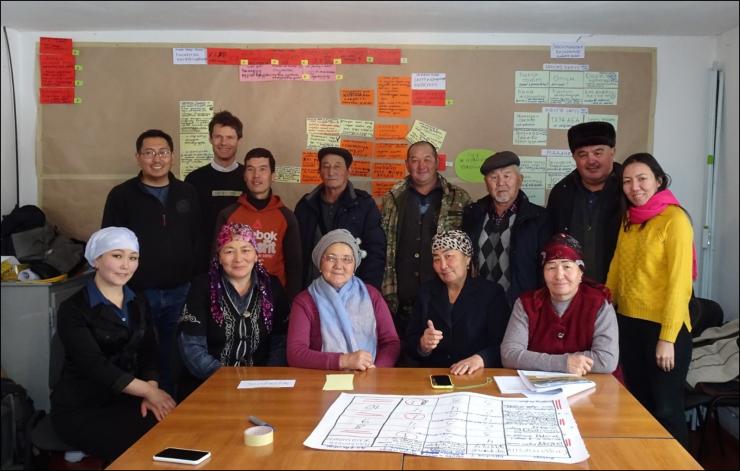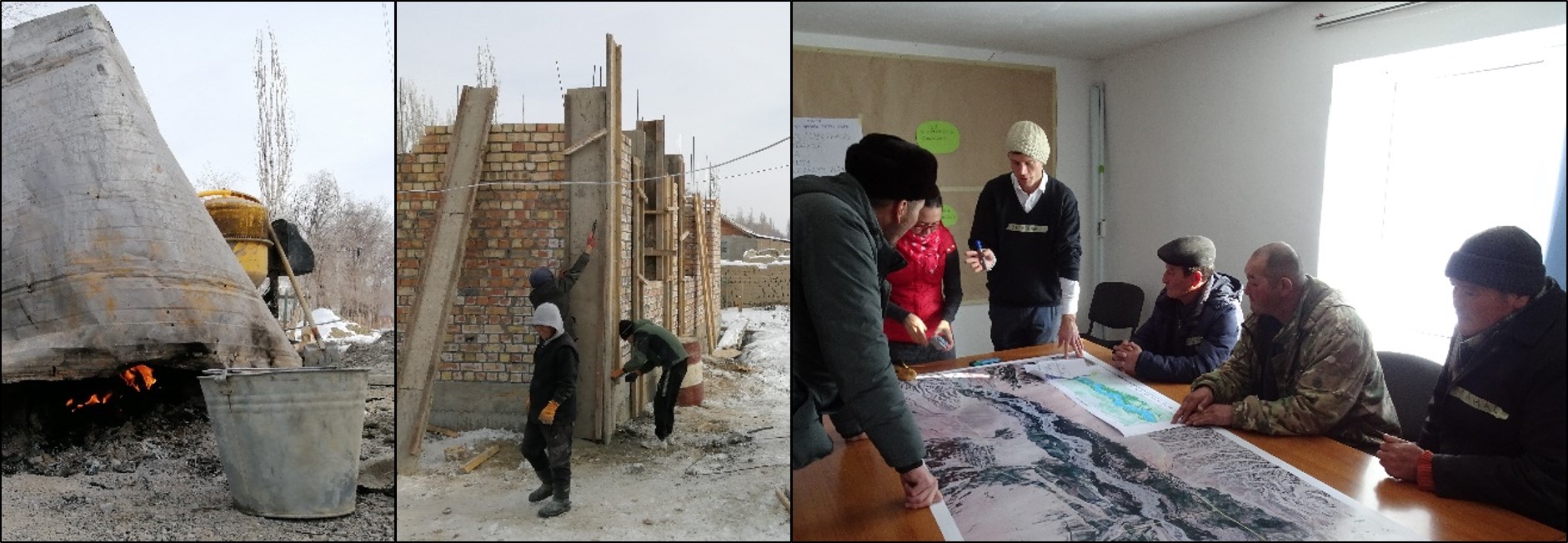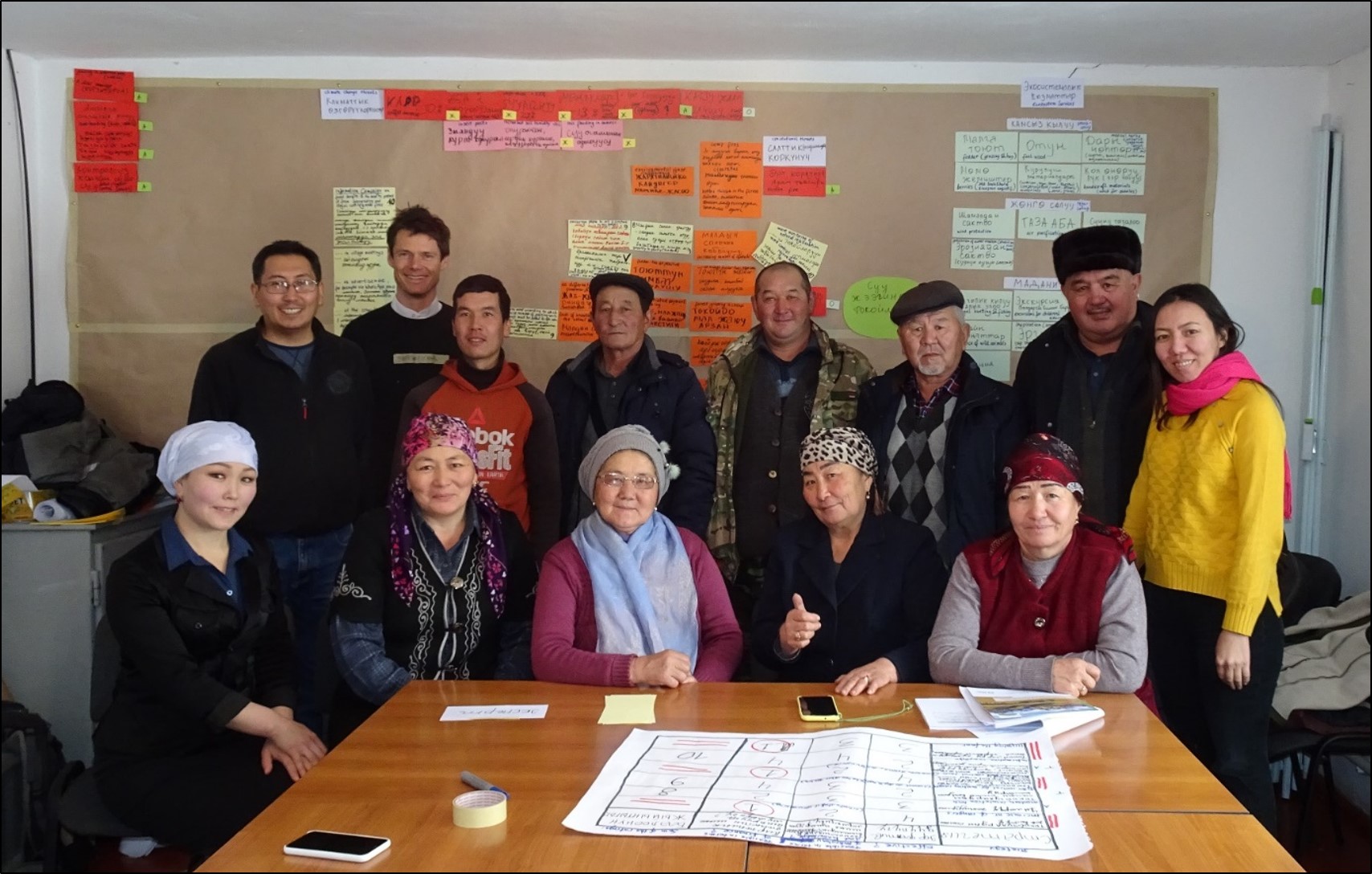

ÖkoFlussPlan: Kyrgyz village develops own strategies to protect alluvial forest
The project ÖkoFlussPlan aims to preserve the partially overused alluvial forests along the Naryn River in Kyrgyzstan and would like to give sustainable management recommendations for this - among other things. Is it possible to develop these recommendations from within the local population so that they do not have a post-colonial flavour? One possible answer to this question lies in stakeholder workshops based on the Conservation Standards (CS), a nature conservation method that brings together the knowledge of different actors to develop a jointly supported situation analysis and strategies based on it.
At the beginning of December, the Eberswalde University of Applied Sciences (HNEE) hosted such a one-week workshop in the village of Ak-Tal, which is located directly on the Naryn River and has considerable alluvial forest areas. On the opening day, the entire community was invited to the local cultural centre to learn about the workshop and to jointly record the ecosystem services of the riparian forest. During the following four days, 20 selected participants met in the confined space of the Local Government:
- 3 participants from the District Forestry Department,
- 3 members of the Local Government,
- 3 members of the Grazing Committee,
- 2 herders,
- 2 members of the Council of Elders,
- 2 members of the Women's Council,
- 2 members of the Youth Council,
- 1 German facilitator (HNEE),
- 1 Kyrgyz co-facilitator (CAMP Alatoo),
- 1 Kyrgyz translator.
Furthermore, the workshop was supported via video calls by a alluvial forest expert (Florian Betz, Catholic University of Eichstätt-Ingolstadt) and an expert on climate change in Central Asia (Timo Schaffhauser, Technical University of Munich).

While the construction of the ÖkoFlussPlan Real Lab, with which the Ingolstadt University of Applied Sciences intends to demonstrate sustainable energy and insulation solutions, continued to take shape outside in the freezing temperatures, the workshop participants lively discussed the following questions inside, which build on each other:
- What is the current state of the riparian forest (Ecosystem Viability)?
- What are the threats?
- What are the socio-economic causes of the threats (Contributing Factors)?
- What kind of ecosystem condition do we want to achieve (Goals)?
As the participants belonged to different interest groups, the debates were sometimes controversial and even heated: For example, is legal logging (alongside illegal logging) also a threat?! But every step of the discussion was documented comprehensibly with moderation cards, so that towards the end a coherent situation analysis materialised. From the point of view of the moderators, this is not complete: For example, the participants could not decide to address the dubious mechanisms of legal logging and the hydropower plants planned in the upper reaches as threats (there is still a lot of information work to be done here!). The undeniable advantage of this discursive analysis of the situation, however, is that all parties present are fully behind it.
On this solid basis, 15 consensus strategies were elaborated towards the end of the workshop, 12 of which stood up to a differentiated feasibility assessment. The strategies aim at reducing the previously identified threats of a) overgrazing, b) illegal logging, and c) forest fires, as well as d) increasing the resilience of the riparian forest to climate change threats. These results will be presented by two workshop participants at the annual village meeting in January.
The EcoFlussPlan consortium should examine these locally developed strategies for their scalability and take them into account for future management recommendations.

